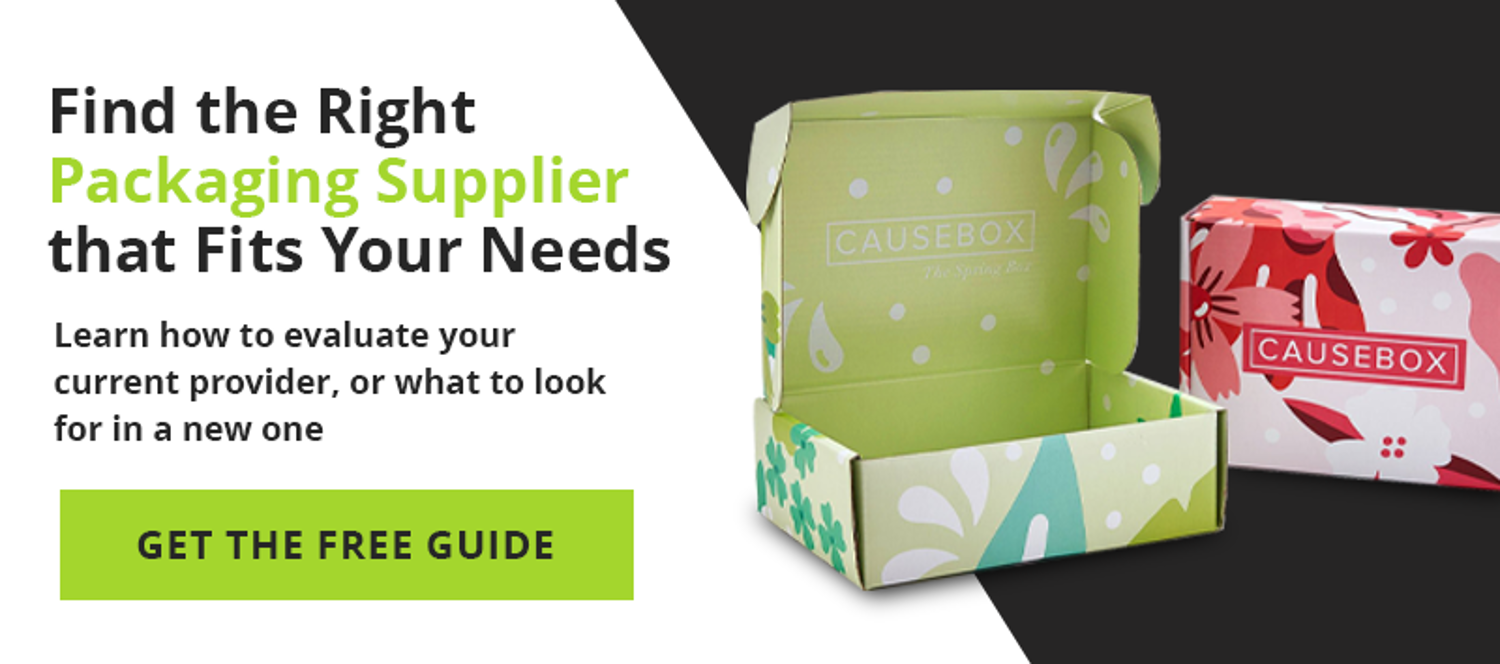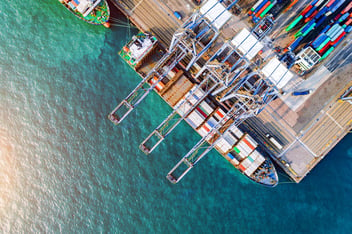Finding the Right Style and Materials for Your Product Packaging
Did you know you can cut costs and boost sales of your products simply by adjusting your packaging strategy?
It’s true.
Whether you are a purchasing manager dealing with hundreds of thousands of units or a startup founder manufacturing product in your garage, finding the excellent packaging solution is critical to scaling your business and keeping costs in check.
Today, we are going to explore 7 questions that will help you find the right packaging for your product, while also looking at how printers can improve your bottom line every step of the way.
1. How Are You Filling Your Packaging?
The first consideration is how you are planning to fill and ship your packages.
This will depend on whether you are using an automated solution that manages high volumes, or hand-finished packaging.
Seal-end boxes is a popular automated filling solution – you see this kind of box every time you walk down the cereal aisle at the supermarket. Many retailers, like brewers, also use auto-glue packaging, so bottles can be dropped into corrugated 12-packs and sealed automatically.
Hand-finished packaging, on the other hand, requires a series of tucks and manual closures. These are a good choice when you have industry-specific design considerations or decorative finishes.
2. What Retail Channels Do You Operate In?
Describing the retail channels you sell your products in can also help your printing partner guide you to the right packaging solution.
If you’re selling value packs of aspirin at stores like Wal-Mart or Costco, you will want your packaging to stay consistent with consumer expectations while keeping your cost-per-unit to a minimum. On the other hand, if you’re looking to sell a high-end product, like an expensive perfume, you don’t want it in a plain looking box.
Identifying the markets, target demographics, and retail channels your products appeal to will help your printer advise you on your options.
3. Are There Shelf Space or Design Considerations?
Many retailers are quite strict in the amount of shelf space they are willing to allot to particular products.
One example of this is the height restriction some retailers impose on their vendors - product packaging must fall within the separation space between the shelves.
These packaging restrictions may vary widely between product types within retail outlets. PetSmart may stock larger packaging and volumes of dog food than your local grocer. These discrepancies can have a big impact on your packaging.
Even if your product is not currently sold in major retail outlets that enforce these restrictions, you may want to plan for the day they will carry your products.
There are other considerations in play as well. Are you selling items that are frozen or refrigerated? Do they require a plastic lining to separate the product from the packaging itself? Are you sending heavy products through the mail, or to a distribution center? All of these factors can influence your requirements and available options.
Your printing partner should be able to help you design packaging that not only fits the physical needs and specifications, but also enhances the shelf appeal of your product.
4. Have You Created a Budget?
It’s good to establish a preliminary budget early in the process, so you can avoid looking at solutions that won’t fit your needs.
The budget does not have to be iron-clad - one of the advantages of working with a reliable printing partner is they can help you scale as your company grows – but you should have some numbers in mind. Describing your product and retail channels to your printing salesperson will help him or her offer a range of packaging options and price points available.
There are also alternative solutions you can explore if your needs don’t fit the budget. If you are selling cosmetic products and want a rigid box, but the budget won’t allow it, you can look at an SBS option, combined with a nice finish that produces a similar effect at a lower cost.
5. Can Your Printer Evolve With Your Organization?
Selecting a printer that can help your packaging evolve as your organization does is another critical consideration.
The best printers have in-house design and engineering capabilities, helping you through the prototyping and sampling process at each stage of your journey from a small business to a multi-national chain.
They should be able to come up with several unique packaging styles, and work with any typographical or marketing team (theirs or yours) to translate your dream from a computer screen onto real, physical packaging.
They should also be able to produce prototypes and mockups – all before requiring you to commit to anything. At the same time, they should provide actionable, short-term advice that helps you control costs and improve your product shelf appeal.
6. Could Warehousing Get Us Volume Pricing?
Fixed costs in the printing industry are often high, but per unit pricing becomes quite low once you commit to certain volume orders.
Consider the example of someone producing packaging on a full, high-color press. Before the run even begins, costs may already amount to a couple thousand dollars or more. These expenses go toward press time, the plates, and a couple thousand sheets of paper to ensure color conformity.
If you’re only ordering a hundred boxes, your fixed costs are already increasing your final packaging cost by $20 per unit. However, if you are ordering 5k, 10k, or 50k+ boxes, those fixed costs can spread out over the entire order, amounting to a couple cents per unit.
Also, remember that packaging doesn’t spoil; working with a printer can extend you free warehousing options over 12-24 months means that you can cut your final packaging costs by 90% or more by placing larger, but less frequent orders.
7. Is Sustainability Important?
One final consideration that is whether or not to use sustainable packaging options.
The two choices in this arena involve recyclable packaging versus recycled packaging. Most paperboard and litholam options qualify as recyclable, which is sufficient for a good number of retailers, but others want to push the envelope and do more to improve their branding and carbon footprint.
These organizations might consider recycled packaging, which incorporates a certain percentage of post-consumer waste product directly into the material. For those wishing to go even further, there are several FSC (Forest Council Certified) solutions available, that provide more detail on the potential green impact such options make.
The best printing partners will be able to offer you a wealth of options, and even deliver additional choices such as PET, plastics, acrylics, and unusual substrates like paper bags.
There is a lot more in play than meets the eye when it comes to making the correct choices regarding your product packaging options. No matter what lifecycle stage your company is at, there are always opportunities to improve results and lower costs. Your product packaging is a good place to start.


